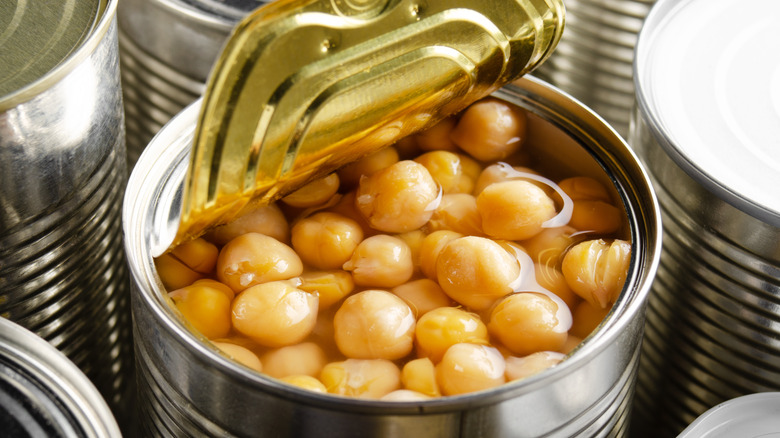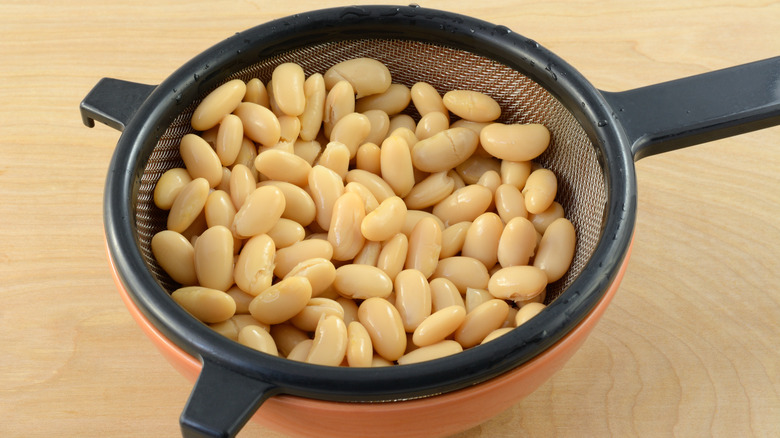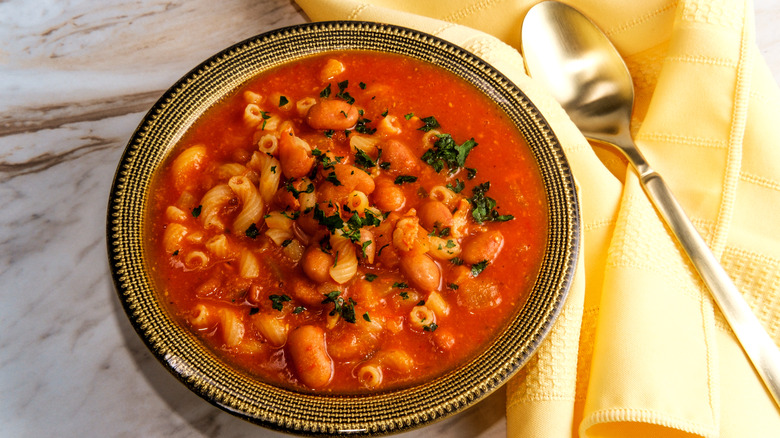The Practical Reason You Should Rinse Canned Beans
Canned beans, which include the likes of chickpeas, black beans, white beans, butter beans, and cannellini beans, are so good for you. They are packed with fiber and essential nutrients including potassium, iron, magnesium, and folate, according to the Mayo Clinic. They are a great source of plant protein and many would agree they are delicious. With a meaty taste and tender texture, beans are readily available and inexpensive, too.
For these reasons alone you should keep cans of beans in your pantry, and you probably do. But have you ever opened a can or two and dumped it into your pot of chili or vegetable soup, liquid and all? After all, the liquid is part of the beans, isn't it? Well, no. Unless the recipe calls for the bean liquid, that's actually a mistake. There's an extra step to take before you add those little nuggets to your recipes.
Canned beans, or, technically speaking, legumes, are packed in a thick, briny liquid that helps preserve the cooked beans and keeps them moist and fresh. In fact, the liquid is what the dried beans were cooked in.
Rinsing beans for flavor and health reasons
As with all processed foods, canned beans can be high in sodium since they are cooked with salt for flavor, texture, and preservative purposes, according to the National Library of Medicine. And as beans cook, they release starch into the cooking water; that's why it's thick. That salt and starch content is why you should rinse and drain canned beans before using them in your recipes. The salt and starch can change the characteristics and texture of the dish, especially if you are making a casserole, and will increase your sodium intake. Rinsing canned beans can remove about 100 milligrams of sodium per half cup of beans, per Cook's Illustrated.
And, as with all canned foods, canned beans can have an unfortunate metallic flavor. Thoroughly rinsing and draining the beans after you open the can will rid your beans of all that.
But wait! Don't discard that bean liquid, called aquafaba, which can be used to make a delicious vegan substitute for whipped egg whites. Chickpeas, or garbanzo beans, are the best source of aquafaba because they are the beans with the mildest taste, but you can use any bean liquid.
Use your beans in a multitude of ways
Put a colander or sieve over a bowl if you're going to save the liquid, then pour the canned beans into it. Put the beans in their sieve under the faucet and rinse them under cool water until the water runs clear. Give the sieve a good shake to remove most of the water and continue with the recipe.
Now that your beans are rinsed and ready to go, what are you going to make? As it's winter, a rich and warming pasta e fagioli, which combines cannellini beans with pasta and veggies in a tomato sauce, would be a great choice. Or you can opt for a thick and hearty black bean soup served with some garlic toast or a chicken parm chili for a nice twist on a classic recipe. If you're hosting guests, you can try a delicious and unique appetizer like garlicky roasted chickpeas with feta and mint.
When it comes to beans the possibilities are almost limitless, but do yourself a favor and rinse them first.


